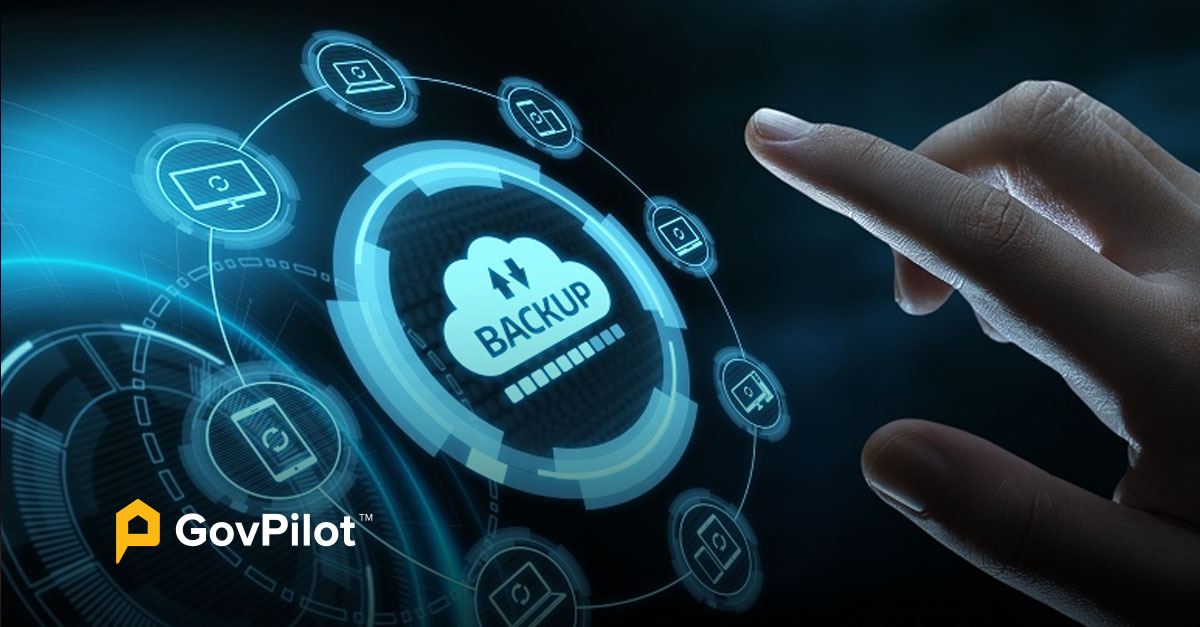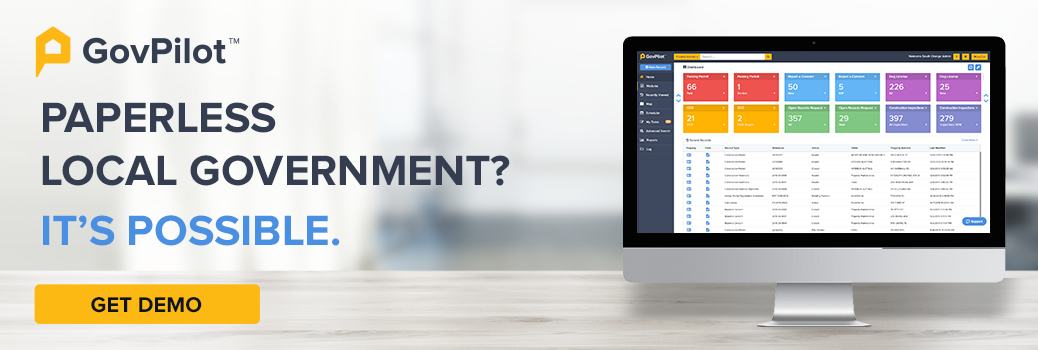As many local governments continue to rely on antiquated computer and IT systems, and become more reliant on information technology, they become more susceptible to cyber threats, potentially causing sensitive information to leak and disrupt vital operations. A single breach can lead to severe consequences, like compromised personal data, financial losses, loss of public trust, and more.
That's why any entity, especially one that the public relies on, needs a comprehensive IT disaster recovery plan. This can reduce cyber threats, protect data, and ensure uninterrupted services.
So, what are the critical components of a government IT disaster recovery plan? And how can government units ramp up their cyber security?
What Is a Government IT Disaster Recovery Plan?
A government IT disaster recovery plan is a well-thought-out strategy that public agencies use to protect their computer systems and data in case of a disaster or significant disruption. It's like a safety net ensuring essential information is recovered, systems restored, and municipal services and operations resumed quickly.
Imagine your personal computer suddenly crashing, causing you to lose all your files, documents, and photos—it's a nightmare. Now, think of that happening on a much larger scale, affecting hundreds of employees and thousands of citizens. A government IT disaster recovery plan prevents such nightmares.
What’s Included in an IT Disaster Recovery Plan?
The plan outlines the steps and procedures to follow before, during, and after an incident to minimize impact and speed up recovery. It includes identifying critical systems and data, assessing potential risks, implementing preventive measures, and creating backup and restoration strategies.
Ultimately, an IT disaster recovery plan is designed to minimize downtime, protect valuable data, and swiftly recover computer systems and operations. It's a proactive measure to ensure any entity can bounce back from disasters or disruptions and continue serving its stakeholders.
Alongside your IT disaster recovery plan, your municipality should also have a finalized Local Government Cybersecurity Management Plan like New York has just deployed, to get ahead of cybersecurity emergencies before they happen. Consider legislation like the NJ 3-Day Cyber Attack Reporting Law to prevent cyber security breaches before they occur.
Why Government Entities Need Disaster Recovery Plans
Continuity of Government
Local governments, in particular, need IT disaster recovery plans to ensure the continuity of essential services, protect sensitive information, and maintain public trust. These plans are crucial because governments handle vast amounts of data and perform critical functions that directly impact the well-being of individual citizens.
For example, if a natural disaster strikes a government unit's central server, like fire or flooding, it could delay and hamper its emergency response services. Furthermore, it could stop other units from accessing vital records and prevent access to the city's online services.
Cyber Attacks
Another concern is the increasing threat of cyber attacks on government entities. At least 2,323 government units were affected by ransomware in 2021 alone. These attacks can equate to the permanent loss of data and a complete shutdown of government services.
Hackers target government systems to gain unauthorized access, steal sensitive data, or disrupt operations. With a comprehensive IT disaster recovery plan, the city could respond swiftly, restore data from backups, and minimize the disruption caused by the attack.
In both cases, having an IT disaster recovery plan ensures that government entities can quickly recover from disruptive events, protect citizen data, and continue providing critical services. It enables them to respond effectively, minimize downtime, and maintain public trust, even in the face of unexpected challenges or malicious activities.
Government IT Disaster Recovery Plan Framework
Regarding IT disaster recovery plans, Ready.gov is an established authority. The US Department of Homeland Security maintains Ready.gov. Combined with the Government Finance Officers Association (GFOA), they provide valuable guidance on disaster recovery planning.
The key components highlighted by Ready.gov are business impact analysis, technology recovery strategies, IT disaster recovery plans, data backup, and testing.
Business Impact Analysis
Business Impact Analysis determines the most critical aspects of a municipality's IT systems, applications, and data. It includes identifying priorities and setting recovery time objectives. This helps us understand which IT components are critical for the business's operations and guides the development of an effective recovery plan.
Consider business impact analysis when forging your Local Government IT Strategic Plan.
Technology Recovery Strategies
Technology Recovery Strategies create and implement plans to quickly restore hardware, software applications, and data in case of a failure or disruption. They focus on minimizing downtime and efficiently recovering technology components by repairing or replacing hardware, reinstalling applications, and retrieving data from backups.
By switching to the government cloud, your municipality or county can replace antiquated hardware systems and keep data stored and backed up on the Internet.
Data Backup
Data backup entails creating reliable data and application software backups stored securely in a separate location to prevent data loss. It also maintains independent authentication and connections to access backup data, enhance security measures, and minimize unauthorized access risks.
A key component of GovPilot’s security protocol is frequent data backups to ensure your local government retains its critical data.
Testing
Finally, testing involves regularly conducting simulations or tabletop exercises to assess the effectiveness of the recovery plan. It helps identify any weaknesses or gaps in the program and allows for necessary improvements. It keeps the plan well-prepared and effectively manages potential disasters.
Lessons from the GFOA
The GFOA echoes some of Ready.gov's critical components while advising local governments to have disaster recovery coordinators ready, up-to-date contact information for team members, key vendors, and relevant internal and external contacts maintained, and alternative data processing through third-party software providers.
Effective communication from local governments to state and federal agencies is also crucial in today's cybersecurity landscape. The recent implementation of the NJ 3-Day Cyber Attack Reporting Law highlights the significance of prompt and accurate reporting of cyber incidents (and is great protocol for local governments in any state to consider.)
When cyber attacks are reported swiftly, local governments enable state and federal agencies to respond promptly and provide necessary assistance. This proactive communication facilitates the sharing of vital information, allowing the agencies to enhance their cybersecurity measures.
It also helps collect valuable data on hacking trends, leading to better preparedness and mitigation strategies for future incidents. Ultimately, strong communication channels strengthen the overall resilience and security of government entities at all levels.
Key Ways Local Governments Can Modernize Cybersecurity
Local governments can modernize cybersecurity in several ways, but a few are more effective. Here are our top five ways to improve a local government's cybersecurity.
1. Use The Government Cloud
Leveraging the cloud for online government data storage and regular backups is crucial in safeguarding critical information. This secure infrastructure helps organizations protect their data from theft by hackers.
In the event of a breach, having cloud backups online restores valuable data, minimizing the impact of cyber attacks.
GovPilot has partnered with Microsoft Azure to offer cyber secure cloud-based data storage for local governments across the country. Learn more about how GovPilot has improved local governments for the better in our local government case studies.
2. Government Cybersecurity Training
Outdated IT systems make local governments vulnerable to ransomware and malware attacks. Hackers exploit officials with phishing, stolen passwords, or malware to steal data or disrupt services.
With proper training and awareness, government employees can be the local government's first line of defense. Here are Local Government Cybersecurity Training Tips.
3. Use a .gov Domain
The .gov domain offers increased security compared to other popular domains like .com or .org. It provides authentication and verification processes, ensuring that websites using this domain belong to legitimate government entities, reducing the risk of fraudulent activities, and enhancing user trustworthiness.
Learn more Government Website Design Tips to make a user-friendly site for your citizens.
4. Data Encryption
Data encryption provides a layer of protection for local governments against cyber attacks. It converts sensitive data into an unreadable format. So even when hackers steal sensitive data, accessing and understanding the information will be another feat.
So, even if they manage to infiltrate the system, this step ensures confidentiality and data integrity.
All government data stored on GovPilot is encrypted. Here are more Government Cybersecurity Best Practices.
5. Two-Factor Authentication
Two-factor authentication (2FA) adds an extra layer of security to any system. Instead of just using a username and password to authenticate users, it requires a secondary device for further verification, like a smartphone, an RFID tag, or even a hardware security key.
So, even if a username and password combination is compromised, the hacker still couldn't gain access without the additional code provided by the 2FA.
Data Protection and Recovery Is Part of Good Governance
Protecting sensitive government data and maintaining essential services are paramount in today's cyber threat landscape. Local governments should embrace innovative solutions like GovPilot government management software to ensure robust cybersecurity measures.
GovPilot offers a comprehensive platform that combines government management tools with the security of the cloud. With GovPilot's secure infrastructure, local governments can confidently store and manage their data, knowing it is protected from cyber-attacks and accessible when needed.
With features such as encrypted data storage, regular backups, and advanced authentication protocols, GovPilot empowers local governments to strengthen their cybersecurity defenses. It enables efficient public data management, streamlined operations, and enhanced collaboration, all while prioritizing the security and privacy of sensitive information.
By adopting GovPilot, local governments can stay ahead of cyber threats, safeguard vital data, and maintain the trust of their communities. Let us embrace this powerful solution to secure government-wide data in the cloud and build a resilient and secure future for our local governments.
To get started, book a free demo.
Government Disaster Recovery Plan FAQs
-
What Is a Government Disaster Recovery Plan Framework?
A government disaster recovery plan is a detailed guide that helps protect computer systems and data during major disruptions or disasters. It outlines step-by-step procedures to minimize downtime, recover critical systems and information, and ensure that essential government services can continue without significant interruptions.
-
Why Do Governments Need to Prepare for IT Disasters?
Governments must prepare for IT disasters to safeguard sensitive information, maintain critical services, and uphold public trust. IT disasters can lead to government data breaches, disrupted operations, financial losses, and public confidence loss.
Preparedness allows governments to minimize the impact, recover quickly, and serve their communities effectively.
Keep in mind, if you’re using on-site computer systems, natural disasters pose a threat to your IT infrastructure too.
-
How Can Local Governments Ramp Up Cybersecurity?
Local governments can ramp up cybersecurity by using government management software.
This software should use the government cloud for secure data storage and backups, provide comprehensive cybersecurity training to employees, implement data encryption for confidentiality, and adopt two-factor authentication to prevent unauthorized access. These measures strengthen defense against cyber threats and protect sensitive information.
Hiring government tech talent is a critical way to prioritize IT best practices within your municipality.
Read on:
- Federal Cybersecurity Grants for Local Governments
- NY Local Government IT & Cybersecurity Management
- NJ IT Business & Technology Management Plan
- BEAD Broadband Grants for Rural Governments
- List of Local Government Agencies
Sources






